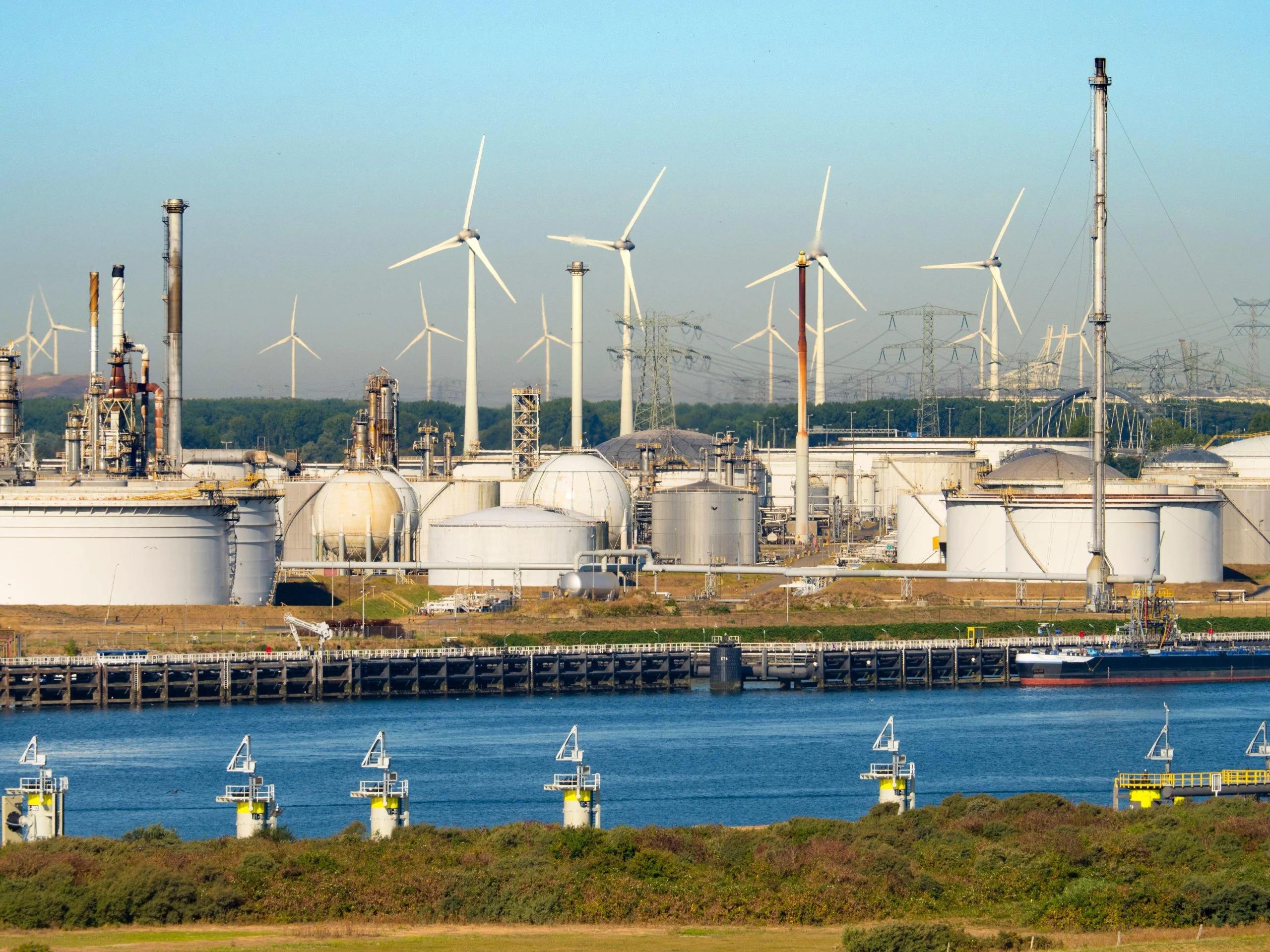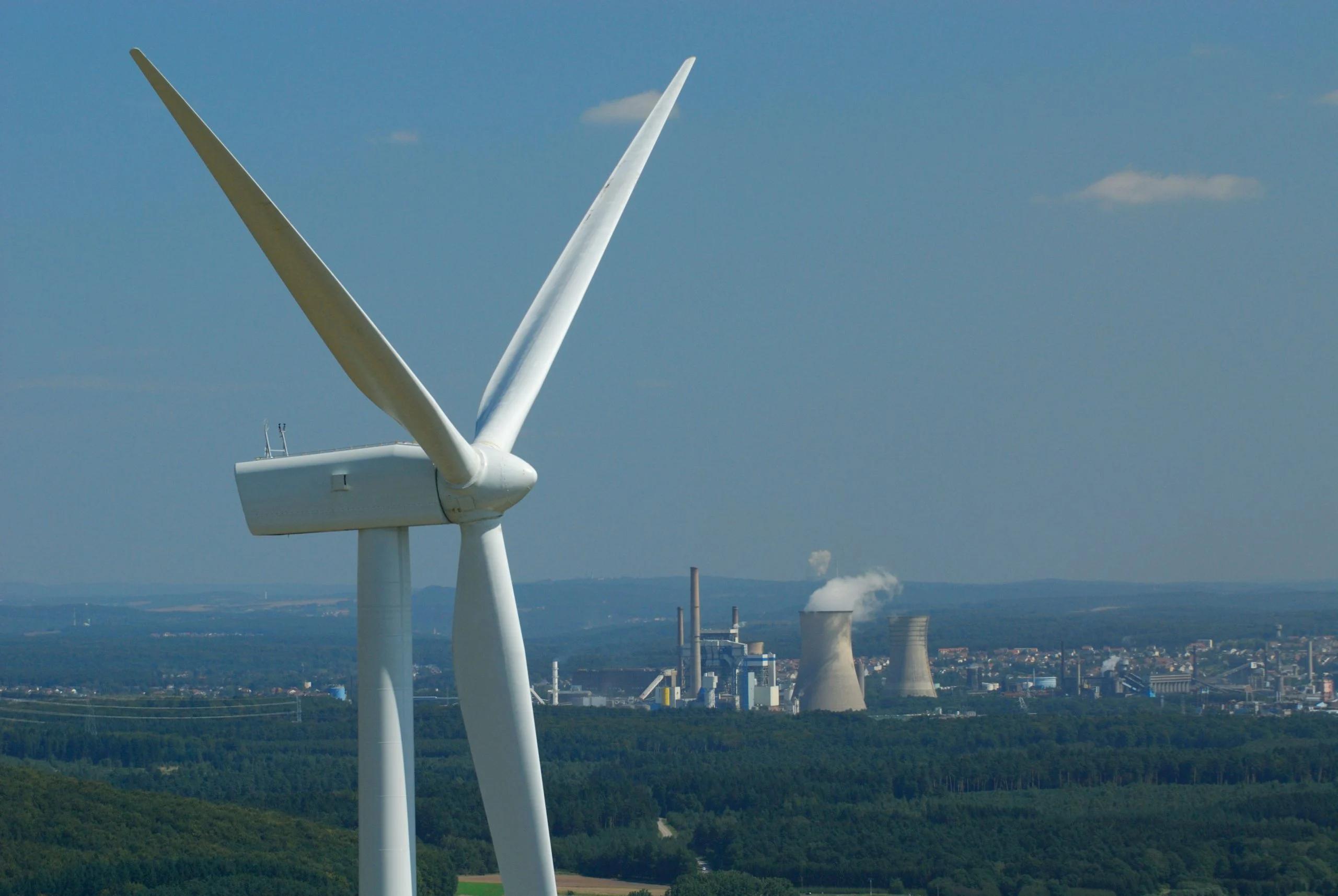
Solar exports from China increase by a third
Exports of solar panels from China increased by 34% in the first half of 2023 compared to the same period last year.
ÍNDER
Resumo Executivo
O boom solar continua
O crescimento das exportações solares da China está ajudando a atender à crescente demanda por energia limpa e acessível, impulsionada por mercados como a Europa e a África do Sul que têm a intenção de aumentar a segurança. emissões em todo o setor de energia. Os caminhos alinhados com o aquecimento global limitando a 1,5 graus requerem uma triplicação de capacidade renovável até 2030, na qual a energia solar deve desempenhar o maior papel. Takeaways
Solar power is expected to be the largest source of electricity capacity by 2027 and will be key to rapidly reducing emissions across the power sector. Pathways aligned with limiting global heating to 1.5 degrees require a tripling of renewable capacity by 2030, in which solar is expected to play the largest role.
China has at least 80% of the global market share in solar manufacturing capacity, making Chinese exports an important dataset for tracking the clean energy transition.
Key takeaways
Exportações solares da China Rise
Na primeira metade de 2023, as exportações de painéis solares da China cresceram 34%, com 114 GW enviados mundiais, em comparação a 85 g de GW no período de 34%. Isso é equivalente ao total da capacidade do painel solar instalado dos Estados Unidos (113 GW). A região também viu o maior crescimento absoluto em todo o mundo, com exportações de painéis solares da China para a Europa até 47% ano a ano. 66 GW foram enviados para a Europa no primeiro semestre de 2023, contra 44 GW no mesmo período do ano passado. O Brasil é o próximo maior importador após a Europa, recebendo 9,5 GW de exportações de painéis solares chineses nos primeiros seis meses de 2023, quase inalterados em relação ao ano anterior. Na África do Sul, com o país importando 3,4 GW (acima de 0,6 GW em H1-2022), enquanto governos e cidadãos se voltaram para a energia solar na cobertura como uma saída de suas crises energéticas. Após a África, a região com o próximo crescimento relativo mais rápido foi o Oriente Médio, um aumento de 64% (+2,4 gw) na primeira metade de 2023 em comparação com o mesmo período do ano passado. No entanto, a lacuna entre as exportações do módulo e a capacidade instalada está crescendo, com estoques significativos de
Exports satisfy a surge in demand from Europe
More than half of the solar modules exported from China in the first half of 2023 were destined for Europe (58%). The region has also seen the greatest absolute growth worldwide, with exports of solar panels from China to Europe up 47% year-on-year. 66 GW were shipped to Europe in the first half of 2023, up from 44 GW in the same period last year. Brazil is the next biggest importer after Europe, receiving 9.5 GW of Chinese solar panel exports in the first six months of 2023, almost unchanged from the previous year.
Africa sees the fastest growth
Africa was the region with the largest percentage growth (+187%), driven by large increases in South Africa, with the country importing 3.4 GW (up from 0.6 GW in H1-2022) as governments and citizens turned to rooftop solar as a way out of their energy crises. After Africa, the region with the next fastest relative growth was the Middle East, up 64% (+2.4 GW) in the first half of 2023 compared to the same period last year.
Based on Chinese export data, 2023 should see another big step up in installed solar capacity worldwide. However, the gap between module exports and installed capacity is growing, with significant stocks of Módulos sentados em armazéns. Concerted policy effort is needed to ensure that the installation and integration of solar PV can keep pace with module supply and match the acceleration needed for the tripling of renewable energy capacity by 2030.
Analysis
A 34% increase in China’s solar panel exports meets growing global demand
Exportações de painéis solares da China cresceram 34% na primeira metade de 2023, com o crescimento mais rápido na Europa e na África. 85 GW Na primeira metade de 2022 a 114 GW no mesmo período deste ano, o que é quase tanto quanto o total exportado em todo o 2021. Essa quantidade de painéis solares geraria eletricidade suficiente para alimentar a Suécia e é equivalente à capacidade total do painel solar instalado dos Estados Unidos (113 GW).
China’s module exports increase by a third
Exports of solar modules from China to the rest of the world have increased 34% year-on-year, growing from 85 GW in the first half of 2022 to 114 GW in the same period this year, which is almost as much as the total exported over the whole of 2021. This amount of solar panels would generate enough electricity to power Sweden and is equivalent to the total installed solar panel capacity of the United States (113 GW).
China currently produces around eight out of every ten solar panels, and the growth in Chinese exports has global implications for the scale-up of clean power.
Half of China’s solar exports shipped to Europe
The data reveals that Europe accounted for 52.5% of the value of China’s solar exports in the first half of 2023.
Solar modules, which are fully assembled solar panels, accounted for 90% ($23.8 bn) of China’s total solar exports by value in the first half of 2023. Over the last 12 months, China exported 111 GW of solar modules to Europe, the same amount as the total installed PV capacity of the United States. With a total over the last 12 months of 19 GW, Brazil is the largest single destination for China’s solar module exports outside of Europe.
Solar cells, which are unassembled parts that make up solar panels, made up the remaining 10% of China’s solar exports by value ($2.5 bn). The main export destinations for solar cells were Türkiye (33%), India (17%), Cambodia (15%), Thailand (10%) and South Korea (4%).
The remainder of the report analyses exports of assembled modules only.
Europe and Africa see the greatest growth
Europe saw the largest absolute growth in solar panels imported from China in the first half of 2023 compared to the previous year, while Africa saw the largest percentage growth, driven by large increases in South Africa. Many parts of Asia, Latin America and the Middle East also saw significant growth.
Europe
Growth is concentrated in Europe, where imports of solar panels from China are up 47% (+21 GW), from 44 GW in the first half of 2022 to 66 GW in the same period this year. Once installed, this new capacity could provide around 2% of Europe’s annual electricity demand, similar to the annual demand of Belgium, supporting the region’s goals to increase energy independence.
However, stockpiles grew, with an estimated 40 GW of solar panels currently in warehouses within Europe, underlining the bottlenecks in installing and connecting solar panels.
Note: It is not possible to confirm from the export data which countries within Europe are receiving these panels since the majority are shipped to the Netherlands, which is a major import hub rather than the final destination for large volumes of solar panels. A number of countries within Europe have seen Registro adições da capacidade solar na primeira metade de 2023.
Manufacturing capacity steps up
In 2022, global solar PV manufacturing capacity increased by over 70% to reach almost 450 GW, according to the IEA. Global solar PV manufacturing capacity is expected to double again and reach quase 1000 GW Capacidade por ano em 2024. A maior parte do crescimento ainda está na China, embora 70 GW/Ano de Capacidade entrem on -line nos Estados Unidos, Europa, Índia e outros países na Ásia. IS
China’s solar manufacturing capacity is esperado para quase o dobro no próximo ano, de 504 GW/ano no final de 2022 a 931 GW/ano no final de 2023. A Europa está buscando a capacidade de fabricação de 2025. de30 GW/year of manufacturing capacity by 2025. In the United States, the Inflation Reduction Act has spurred investments of 85 GW/Ano da capacidade de fabricação de painéis solares. A Índia tem como objetivo aumentar a capacidade de fabricação para 110 gw/ano até 2026.
Uma via alinhada de 1,5 grau requer Atripling of renewable capacity by 2030, which is already possible to achieve with 1000 GW/year of supply expected by 2024. It is clear that global manufacturing capacity is currently not the limiting factor.
However, the gap between solar module exports and installed PV capacity is widening. In part, this gap may reflect an underestimation of installed rooftop capacity, or lags in collecting accurate numbers for total installed capacity. Yet it also clearly reflects a build-up of Module estoques em armazéns Como resultado dos desafios da aceleração da instalação solar e da integração da grade.
Conclusão
Solar está crescendo
A capacidade de fabricação solar global não é uma barreira para o aumento de cinco vezes na implantação solar necessária para as vias de 1,5c, e as políticas devem agora se concentrar em 202 pessoas que podem ser focadas em gastos com a instalação. ser
Solar demand in 2023 is booming: the latest data shows there may be 50% mais instalado em 2023 do que em 2022. E existe Chega Capacidade global de fabricação on -line para garantir que ela possa continuar a fazê -lo. Havia
Nowhere is this more true than in China. There were 154% Mais painéis solares instalados na primeira metade de 2023, em comparação com o mesmo período em 2022. Em comparação, as exportações de painel solar da China aumentaram 34% no mesmo período. A capacidade de fabricação solar da China é esperado para quase o dobro no próximo ano. Isso resultou em uma grande redução no preço dos painéis solares, que têm caíram 25% desde o início do ano. Grande parte da demanda da Europa por energia solar é
Imports of Chinese solar panels will continue to be important to the global electricity transition in the short term. Much of Europe’s demand for solar power is sendo atendida pela China, mas essa dependência será reduzida à medida que a região aumenta Capacidade de fabricação. Os EUA já cortaram as importações chinesas para quase zero, e a Lei de Redução da Inflação possui Investimentos estimulados na capacidade de fabricação de painéis solares. A Índia relaxou seu dever de importação para retomar parcialmente as importações solares chinesas, enquanto Aumentando Capacidade de fabricação para se tornar auto-suficiente. é especialmente visível na Europa. Isso é causado por atrasos na instalação decorrentes da escassez de habilidades, permissão e integração da grade. Isso está segurando a transição e criando demanda "reprimida". Lá
But there are signs that deployment is not keeping pace with supply of solar panels, with an increase in imported solar panels left in warehouses, which is especially visible in Europe. This is caused by installation delays arising from skills shortages, permitting and grid integration. This is holding back the transition, and creating ‘pent-up’ demand.
In order to put the world on track for 1.5 degrees, global renewable capacity will need to triple by 2030. There Will seja fornecimento suficiente de painéis solares para garantir que isso aconteça. As políticas governamentais precisam se concentrar em como maximizar a implantação, para garantir que a demanda reprimida por solar seja desencadeada. Dados aduaneiros das exportações do módulo solar por país por mês e converteram o valor em dólares em uma capacidade megawatt, usando um preço mensal do módulo solar. (USD)
Supporting materials
Downloads
Download the full report PDF
Methodology
Summary
We have taken Chinese customs data of solar module exports by country by month, and converted the value in dollars into a megawatt capacity, using a monthly solar module spot price.
Export Data
Ember’s China solar export dataset provides the following information:
- Export amount in weight (kg)
- Export amount in US dollars (USD)
- Valor da exportação em quantidade (número de itens)
- Preço médio do módulo fotovoltaico (USD)
- Capacidade calculada (MW)
|| 1118
Data is sourced from the General Administration of Customs of the People’s Republic of China ( GACC):
- Os dados estão disponíveis de 2017 até o presente. células). excluído deste conjunto de dados. Em 2022, módulos inigualáveis representavam 8,7% do total de exportações de células fotovoltaicas por valor. Para este conjunto de dados, apenas o preço de mercado no exterior para módulos montados é usado. Todos os preços publicados para um determinado mês são calculados em média e os preços são interpolados para a falta de meses. O preço mensal do módulo PV está incluído no download de dados. Calculamos a capacidade a partir do valor da exportação em dólares americanos (dos dados alfândega do GACC bruto) e dos preços médios do módulo PV mensal descritos acima.
- Prior to 2022, assembled and non-assembled cells were not disaggregated into separate commodity codes.
- Prior to 2022, the commodity code used is 85414020 (Solar cells).
- From 2022 and onwards, the commodity code used is 85414300 (Photovoltaic cells assembled in modules or made up into panels).
- From 2022 and onwards the code 85414200 (Photovoltaic cells not assembled in modules or made up into panels) is excluded from this dataset. In 2022, unassembled modules accounted for 8.7% of total photovoltaic cell exports by value.
Module Price
Average monthly PV module prices are sourced from InfoLink Consulting Group. For this dataset, only the overseas market price for assembled modules is used. All prices published for a given month are averaged, and prices are interpolated for missing months. The monthly PV module price is included in the data download.
Capacity Calculation
The capacity (MW) of the solar exports in this dataset is not reported by GACC. We calculate capacity from the export value in US dollars (from the raw GACC customs data) and the average monthly PV module prices described above.
This capacity value is indicative – in reality modules will be traded at different prices depending on the destination, the module technology etc. It is a useful metric to compare trends over time and between countries but it should not be taken as exact.
Release Schedule
GACC releases the monthly solar export data with a one month lag (except for January and February data, which are released together in March).
A liberação do GACC geralmente está disponível no dia 20 do mês, e esse conjunto de dados é atualizado logo depois. Isso é particularmente evidente para as exportações para a Holanda, que é um grande centro de importação para os países europeus. Por exemplo, em 2022, 44 GW de módulos solares foram exportados para a Holanda em comparação com cerca de 4 GW de nova capacidade solar
Caveats
GACC data records the first country solar cells and modules are exported to, which may not be the final destination. This is particularly evident for exports to the Netherlands which is a major import hub for European countries. For example, in 2022, 44 GW of solar modules were exported to the Netherlands compared to an estimated 4GW of new solar capacity instalado na Holanda. Cuidado. Indian Express The same may be true for other countries acting as import hubs for neighbouring countries, and country data should be used with caution.
Acknowledgements
Header image
Workers produce solar photovoltaic modules for export on the production line of a new energy workshop in Haian, Jiangsu province, China.
Credit: Sipa US / Alamy Stock Photo
Media coverage
Conteúdo relacionado





